#christopher rothko
Text

Mark Rothko, No. 7, (mixed media on canvas), 1964 [National Gallery of Art, Washington, D.C. © Kate Rothko Prizel and Christopher Rothko / ARS, New York]
419 notes
·
View notes
Text
Like the poet and the philosopher, the artist 'deal[s] with the verities of time and space, life and death, and the heights of exaltation as well as the depths of despair'. And like that of the poet and the philosopher, it is the artist's role to encompass the world around him and reduce its most salient aspects to a core truth (a 'generalization') that applies to all. Unlike philosophers, however artists do this by speaking the language of the senses; that is, they communicate their ideas through what is essentially bodily stimulation:
[The artist] tries to give human beings direct contact with eternal verities through reduction of those verities to the realm of sensuality, which is the basic language for the human experience of all things.
Christopher Rothko ֍ "Rothko and the Resonance of History." Toward Clarity (2019)
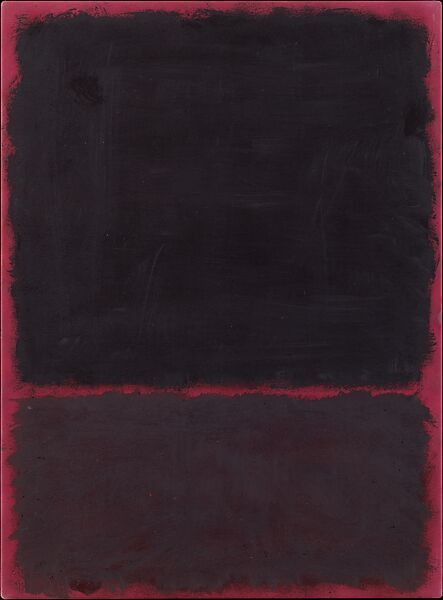
Mark Rothko ֍ Untitled (1967)
#christopher rothko#mark rothko#rothko and the resonance of history#toward clarity#bookshelf#quotes#gallery#painting
12 notes
·
View notes
Text
Rothko's book aside, it would be tempting to look at his classic abstractions as a revolutionary departure from the art that came before: the bold washes of saturated color, the striking reduction of form, the expansive all-over painting which appears to supersede the edges of its own canvas. And yet, as he makes clear repeatedly throughout the text, there can be no such thing as a revolution in art. The 'plastic process', as he labels it—is inherently evolutionary. An artist can react against it, but there is no way to be outside it; it is the fabric with which he or she weaves.
Christopher Rothko ǁ “Rothko and the Resonance of History.” Toward Clarity (2019)

Mark Rothko ǁ Untitled (1950)
#christopher rothko#rothok and the resonance of history#toward clarity#bookshelf#quotes#mark rothko#gallery#art#painting
8 notes
·
View notes
Text
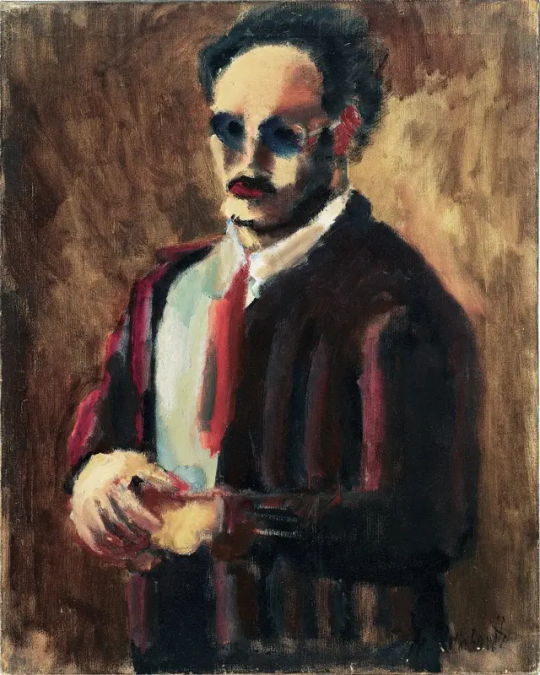
Markus Yakovlevich Rothkowitz , “Self-Portrait” (1936),
Oil on canvas, 32 1/4 x 26 inches.
Collection of Christopher Rothko,
© 1998 Kate Rothko Prizel & Christopher Rothko – Adagp, Paris, 2023.
Markus Rothkowitz was born in 1903, in what was then the Russian Empire and what is today Latvia, but 10 years later he emigrated along with his family to the US.
They were from the educated middle class, and Markus was a brilliant youth, leaving Yale University in 1923 and joining the Art Students’ League in New York.
He was naturalized as an American citizen in 1938 and soon changed his name.
For the rest of his life he was Mark Rothko.
#art#fierce#markus rothkowitz#self portrait#1936#mark rothko#russia#latvia#painting#history#abstract expressionism#christophe rothko#portrait#suicide
25 notes
·
View notes
Text

This Will Destroy You (Jeremy Adam Galindo & Christopher Royal King)
Vespertine - 2020
Music composed and performed by Jeremy Adam Galindo & Christopher Royal King
Art direction by Brent Eyestone & Christopher Royal King
[Note: like Mark Rothko's Seagram murals, this music was originally conceived to be experienced in situ in a restaurant]
#ambient music#abstract art#this will destroy you#TWDY#Christopher Royal King#Jeremy Galindo#Brent Eyestone#mark rothko#Seagram murals
3 notes
·
View notes
Text
Watch "Christopher Rothko - Mark Rothko and the inner World" on YouTube
youtube
#mark rothko#idamariapan#idealeconcepts#monacoion#WordsInLineSpaceAndTime#idealistamagica#impXYZ#FFFXYZ#Flegra#Rothko#Christopher#art#museums#history#inner world#Kunst#WILST#lumiere#light and shadow#colors#spirit#Psychology#psycho analysis#outer space#attimi#LaManoNonMente#Wittgenstein#pensieri e parole#in COR ni ce#video
1 note
·
View note
Text
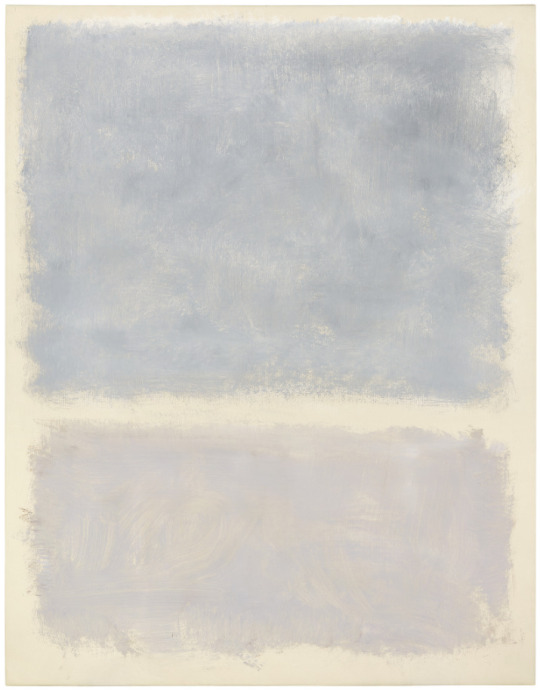
Mark Rothko, Untitled, 1969
Acrylic on wove paper mounted on linen
52 3/4 x 41 in. (134 x 104.1 cm)
Estate/Inventory Number2028.69
Collection Jon and Kim Shirley. © Kate Rothko Prizel and Christopher Rothko
#mark rothko#markrothko#rothko#daily rothko#dailyrothko#abstract expressionism#modern art#abstraction#colorfield#ab ex#colorfield painting#mid century#1969
4K notes
·
View notes
Text


Mark Rothko, Untitled, 1969
Oil on canvas
1998 Kate Rothko Pritzel and Christopher Rothko / Artist Rights Society, New York (ARS)
Hiroshi Sugimoto, Bay of Sagami, Atami, 1997
gelatin silver print
Both photos Courtesy of Pace Gallery
415 notes
·
View notes
Photo
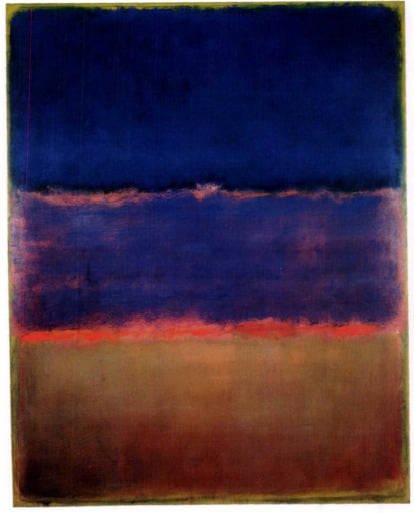
Mark Rothko, Untitled, 1950.© 1998 Kate Rothko Prizel & Christopher Rothko/Artists Rights Society (ARS).
289 notes
·
View notes
Text
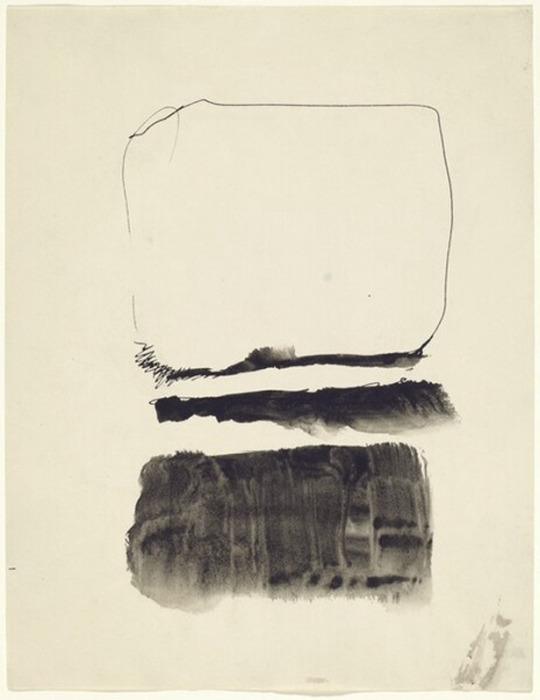
Mark Rothko, Untitled, (pen and ink and wash on wove paper), 1961 [National Gallery of Art, Washington, D.C. © Kate Rothko Prizel and Christopher Rothko / ARS, New York]
308 notes
·
View notes
Text
No mind/body duality therefore for Rothko, who goes on to say that both the subjective and the objective must appeal to our sensuality. One can see this integrated approach in a work such as Aeolian Harp, where the more specific mythic content of this neo-surrealist painting has been subsumed into the overall aesthetic experience. We absorb the philosophical message, at least initially, but means of eye and body. The senses offer a pathway for the artist that allows them to communicate essential ideas, directly and undiluted. Art that falls short of this achievement—art that deals only with particulars, or appeals exclusively to the senses, for example—is really not worthy of the title . . .
Christopher Rothko ֍ "Rothko and the Resonance of History." Toward Clarity (2019)
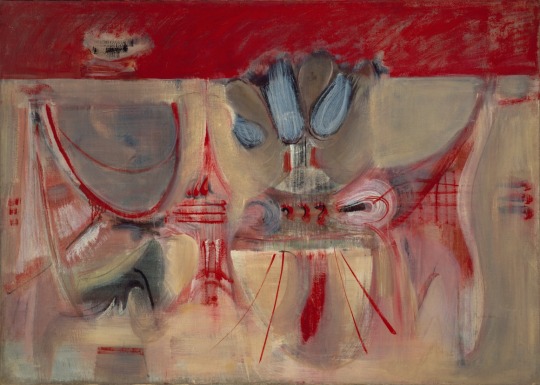
Mark Rothko ֍ Aeolian Harp/No. 7 (1946)
#mark rothko#aeolian harp/no. 7#gallery#painting#art#christopher rothko#toward clarity#rothko and the resonance of history#bookshelf#quotes#fav
10 notes
·
View notes
Text
Perhaps because his paintings seem forever shrouded in a sense of mystery, of meaning always tantalizingly just out of reach, Rothko's essential character has remained elusive and at times misunderstood. Seldom one to speak about himself or even about his work, this artist, who famously 'preferred to tell little' and eschewed 'self-expression' in his work, directed us to keep our eyes focused on his canvases and not be distracted by anecdotes of the personal. He sought to take us away from the everyday and move us toward the abstract, the universal, the larger truths. This was the plane of consciousness that was so often drowned out by the social, the commercial, the particular. And yet, this is the artist who wanted his viewer 'to have the same religious experience he had when painting it' with each of his works. Could there be a more direct personal connection? Indeed, who has stood before a classic Rothko painting and not found it suffused with the emotional presence of the man who made it?
Christopher Rothko ǁ "Rothko and the Resonance of History." Toward Clarity (2019)
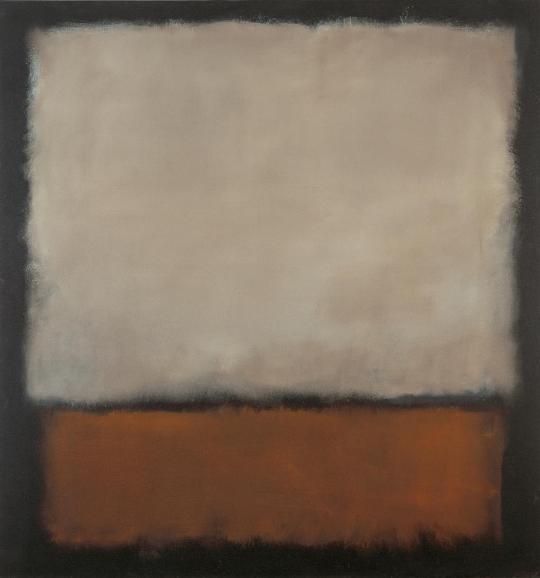
Mark Rothko ǁ No. 7 (Dark Brown, Gray, Orange) (1963)
#christopher rothko#rothko and the resonance of history#bookshelf#quotes#no. 7#dark brown gray orange#gallery#painting#art#toward clarity
3 notes
·
View notes
Text

Mark Rothko: Green on Blue (Earth-Green and White), 1956. Oil on canvas. © 1998 Kate Rothko Prizel & Christopher Rothko/Adagp, Paris, 2023. via Vogue
49 notes
·
View notes
Text
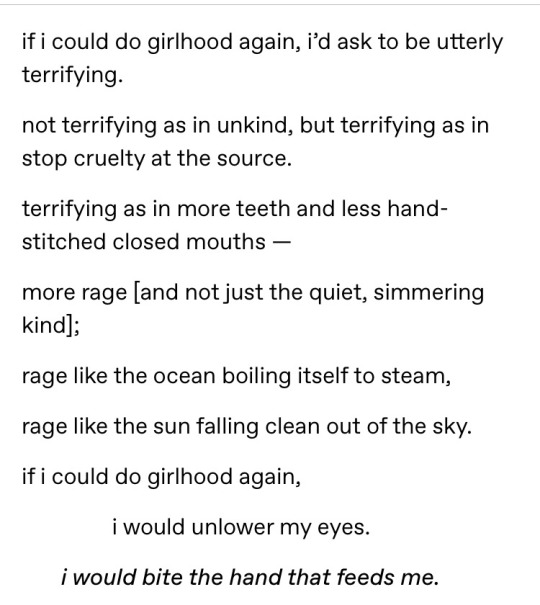
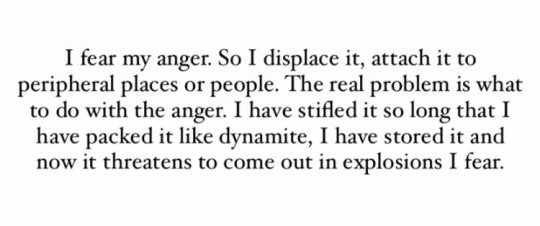
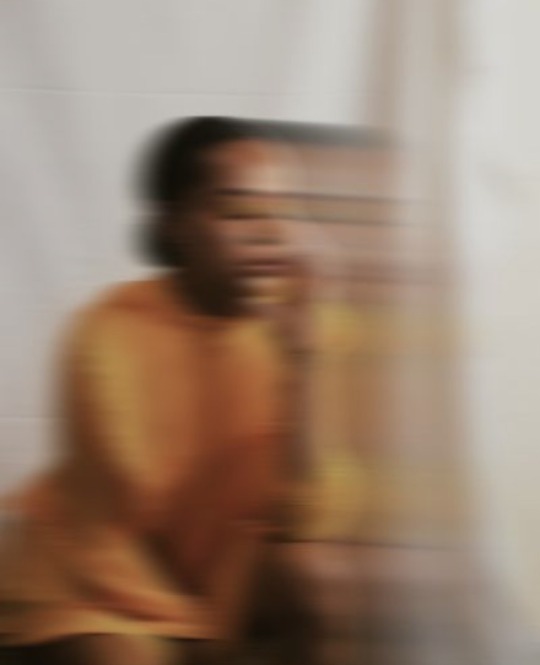
[Rage is a quiet thing
You think that you've tamed it
But it's just lying in wait
Oh, rage
Is it in my veins?
Feel it in my face when
When I least expect it]

The meat tenderiser is broken
-necked so, I must soften
the beef with my father’s
hands, marrow-thick
with knowledge
the meat must be beaten
brutal into tenderness.
That anybody softens
with violence.
Another morning and I wake with thirst for the goodness I do not have.

Rage & it’s violence.
— portrait taken from @rawrrkiyomi (1) Mad Honey Symposium, Sally Wen Mao. (2) Anais Nin. (3) Venetian Smile by Richard Burlet (4) Simmer from Petals for Armour by Hayley Williams. (5) Cover art for the florence + the machine/ethel cain collab Morning Elvis by Peegpin. (6) Wound from the mouth of a wound, Torrin A. Greathouse. Thirst, Mary Oliver. (7) Mark Rothko, Untitled, 1952 (8)
© 1998 Kate Rothko Prizel & Christopher Rothko/Artists Rights Society (ARS)
#word weaving#female rage#collages#parallels#fragments#literature#poetry#quotes#womanhood#girlhood#abyss of words#petals for armor#i’ve been thinking about this for a while#rage&its#part 2 incoming#suddenstrangesurrenders
246 notes
·
View notes
Photo
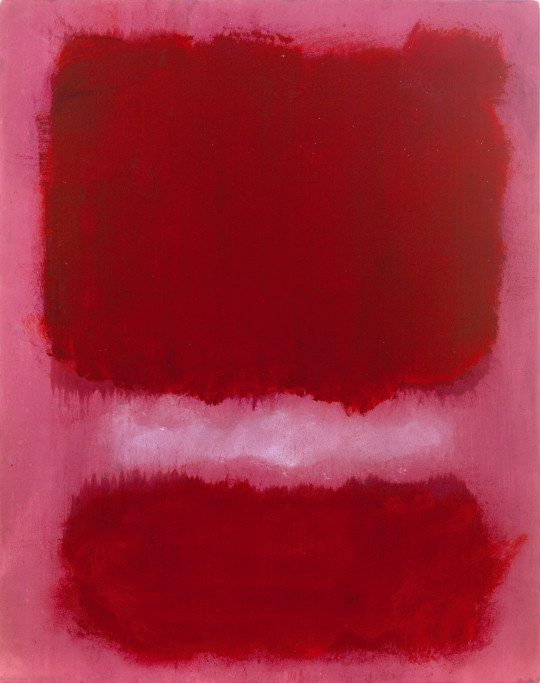
Mark Rothko (1903-1970, American) ~ Untitled, 1968
[Copyright © 2020 by Kate Rothko Prizel and Christopher Rothko.]
339 notes
·
View notes
Text
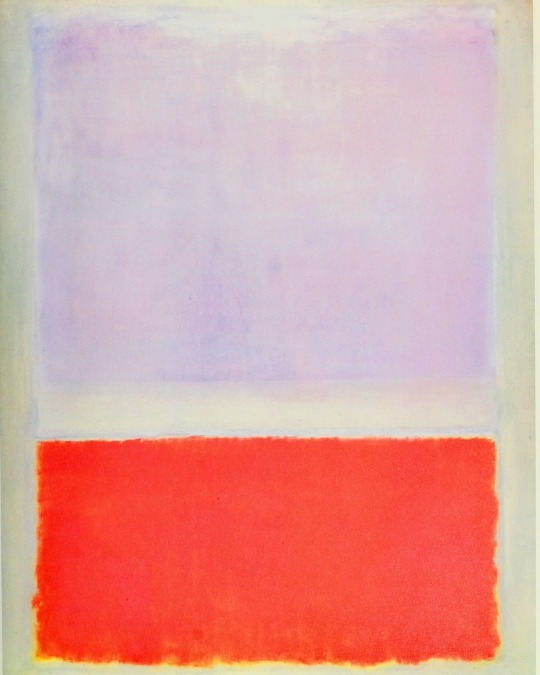
Mark Rothko
Untitled (Lilac and orange over ivory), 1953
Toledo Museum of Art
© 1998 Kate Rothko Prizel & Christopher Rothko /Artists Rights Society (ARS)
19 notes
·
View notes